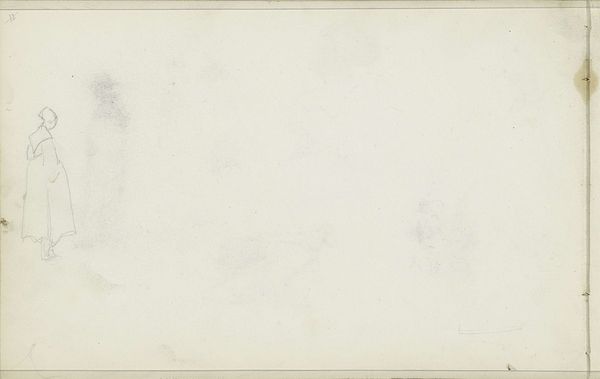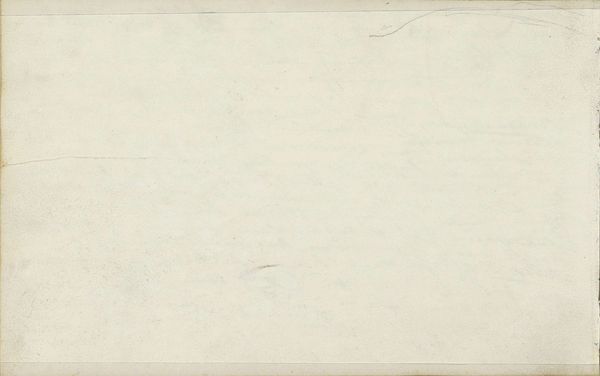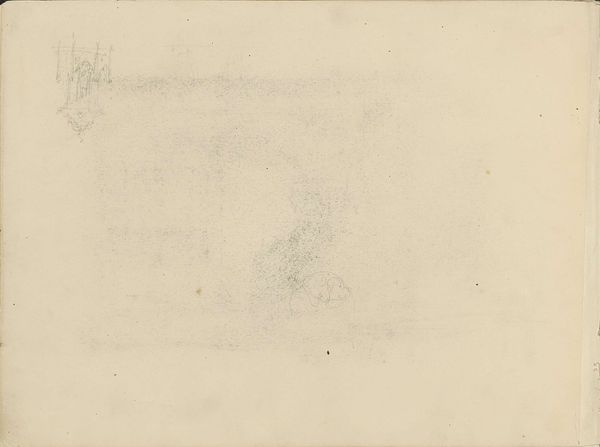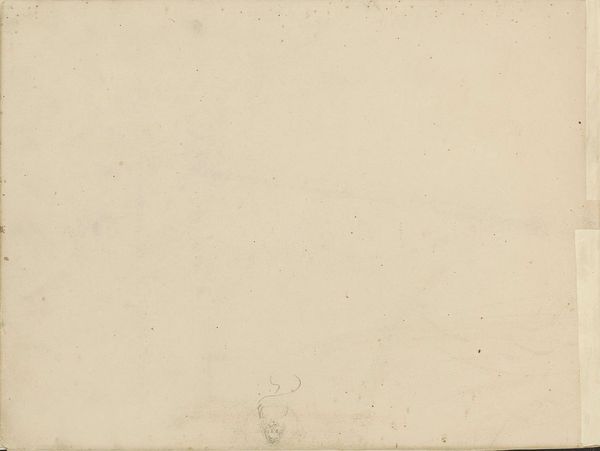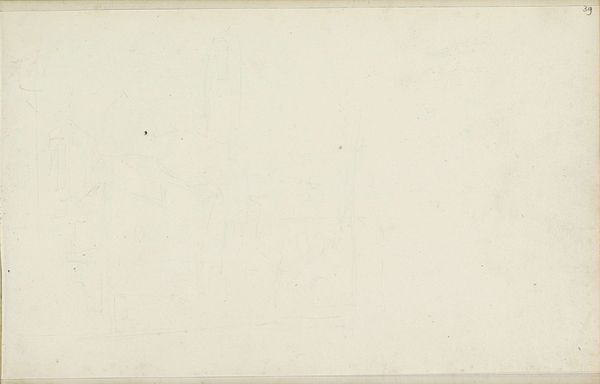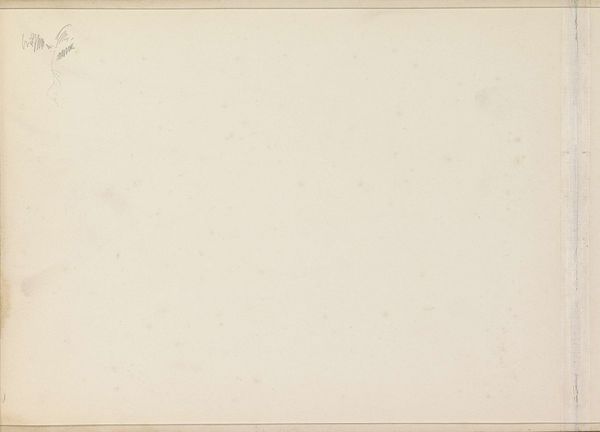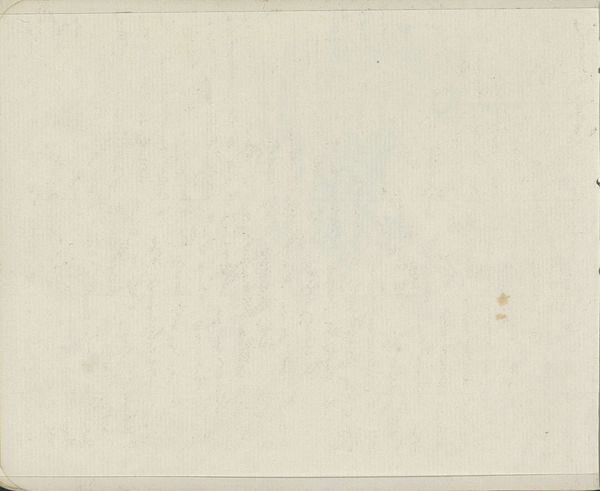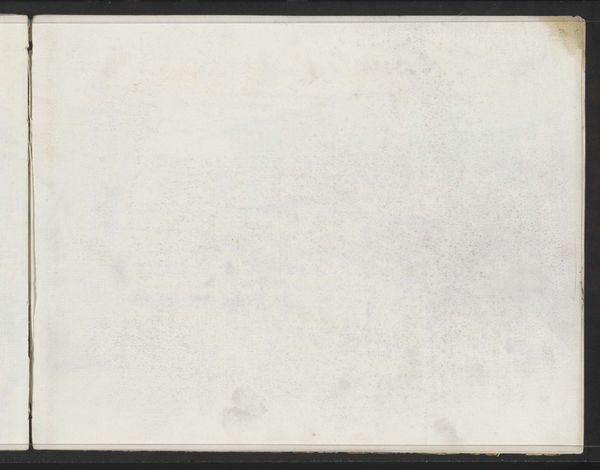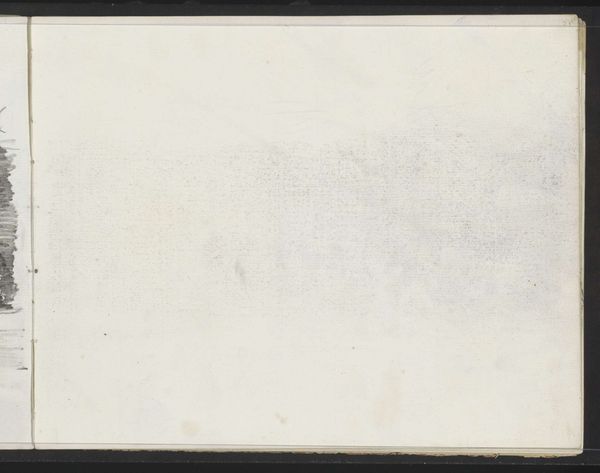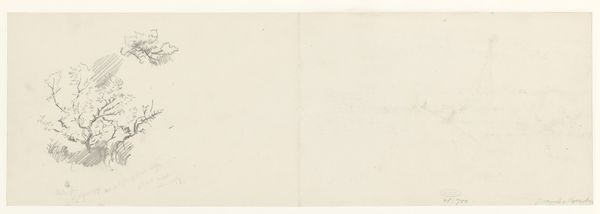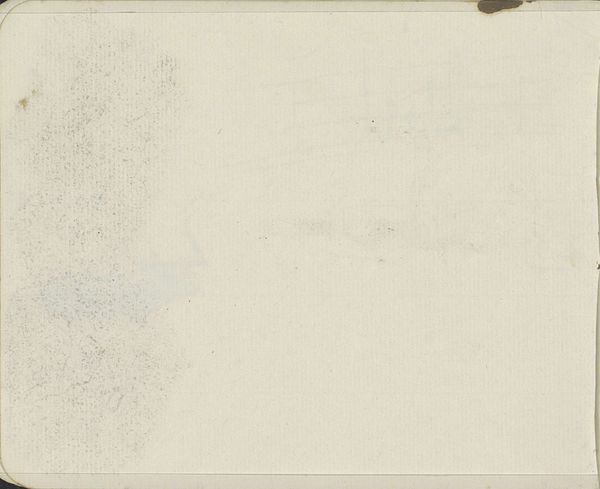
Copyright: Rijks Museum: Open Domain
Curator: Here we have Cornelis Vreedenburgh's "Studie," a landscape drawing housed here at the Rijksmuseum. Its creation dates sometime between 1890 and 1946. Editor: Immediately, I feel a quiet stillness, an intimacy. The composition leads me into a hushed scene—vague, almost ethereal—a ghost of a landscape in pale pencil. The texture of the paper itself feels incredibly present. Curator: It's interesting you say that. Thinking materially, look at the raw nature of pencil on paper, how that accessibility shaped Vreedenburgh's practice. Drawings like these served as studies; quickly executed notations towards a finished painting. I wonder if the very commonality of these materials reflects the everyday landscapes that impressionists frequently portray? Editor: Absolutely, that simplicity resonates! I'm envisioning Vreedenburgh capturing a fleeting moment, maybe the subtle shift of light at dusk. But do you think its perceived ‘unfinished’ state detracts from its value or perhaps, ironically, adds a contemporary flavor? Curator: A loaded question! I argue that’s where the material honesty shines through. Its unfinished quality offers insight into process and working methods of the artist. The landscape isn’t so important as his engagement with impressionistic art making and principles, how these sketches would work together as reference or stand alone studies to inform later work. The economics and democratization of impressionism are laid bare on this accessible surface. Editor: That makes perfect sense. Knowing it’s part of a larger artistic inquiry makes me appreciate its simplicity. A moment preserved. I wonder if Vreedenburgh ever imagined people scrutinizing this piece in a museum someday? Curator: Doubtful. But, considering the material conditions – readily available, cheap drawing materials – we can imagine these artworks accessible to everyday practitioners of art as opposed to elite fine art creation. Editor: I’ll think of this study now as less a hidden-away sketch and more of a testament to the working artist’s eye, their endless curiosity captured with humble materials. Thank you for bringing such fresh awareness to something so intimate. Curator: The pleasure is mine! Hopefully, our listeners feel similarly and will spend time looking closely, considering materiality as part of the aesthetic appreciation.
Comments
No comments
Be the first to comment and join the conversation on the ultimate creative platform.
